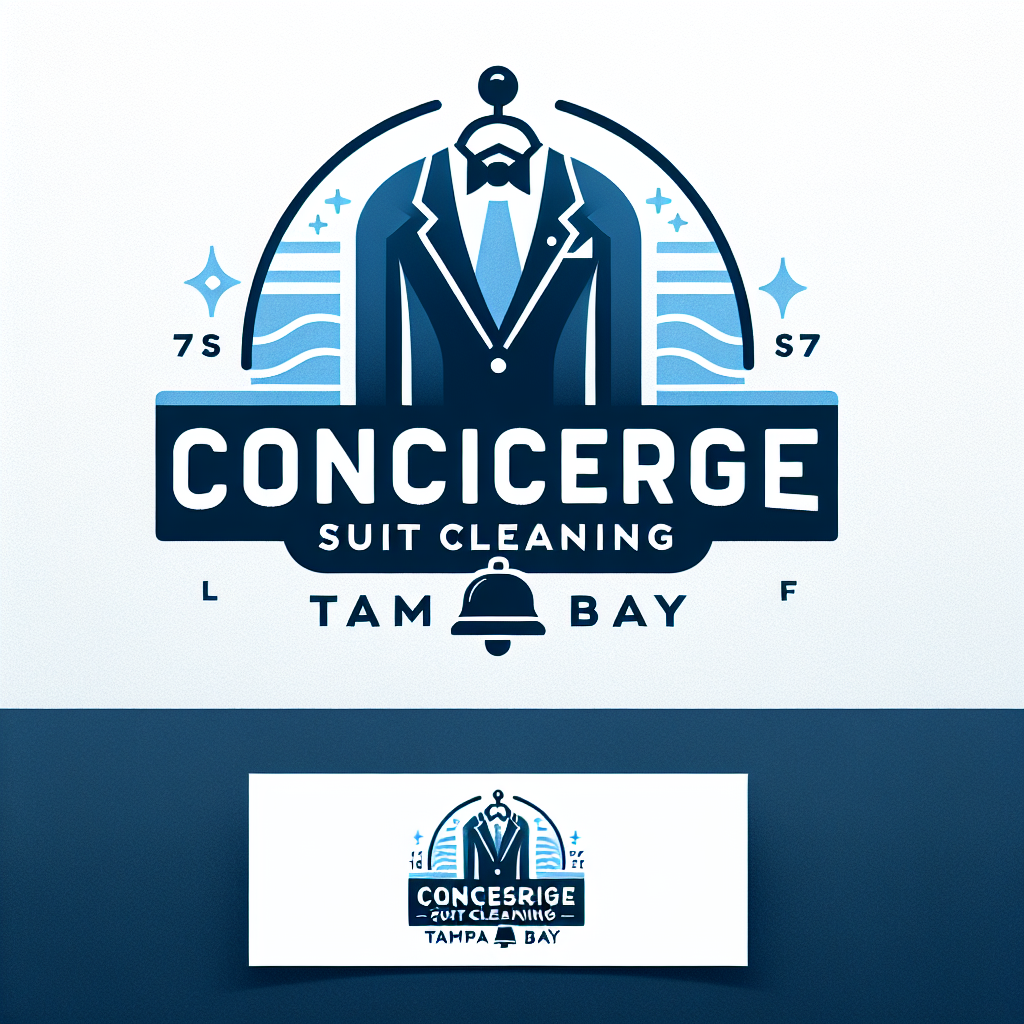Unveiling the Green Secrets of Suit Cleaning: Is Eco-Friendly Really Better?
Ever wondered what magic makes your suit both spotless and eco-friendly? As a seasoned columnist who’s seen the evolution of fabric care, I can tell you that the science behind eco-friendly suit cleaning products is nothing short of fascinating. It’s like a high-stakes chemistry lab meets a sustainable living expo—where innovation meets conscience.
Why Should We Care About Eco-Friendly Suit Cleaning?
Well, aside from the obvious benefits to our planet, eco-friendly products often mean gentler treatment for your precious suits. Think of it as a spa day for your wardrobe—without the harsh chemicals that can wear down fibers over time. Plus, with increasing regulations and consumer awareness, understanding what’s behind these green solutions isn’t just smart—it’s essential.
Is It Just Hype or Is There Real Science Making This Possible?
Let’s cut to the chase. The science behind eco-friendly suit cleaning products hinges on innovative formulations that leverage plant-based enzymes, biodegradable detergents, and advanced surfactants. For example, enzyme-based cleaners target specific stains at a molecular level—think of them as tiny, microscopic ninjas that break down dirt without harming your suit’s fabric or the environment. This approach contrasts sharply with traditional solvents that often contain volatile organic compounds (VOCs), which are notorious for their environmental footprint.
According to a recent study published by the Journal of Cleaner Production, eco-friendly dry cleaning solutions not only reduce water and energy consumption but also significantly lower toxic emissions. That’s a win-win for your wardrobe and Mother Earth.
How Do These Green Formulas Actually Work?
Imagine a chemistry set where natural ingredients are harnessed to mimic traditional cleaning power. Enzymes, for instance, are biological catalysts that target specific stains—protein, oil, or ink—and break them down into harmless substances. Biodegradable surfactants, derived from coconut or sugarcane, lift dirt away without leaving harmful residues. It’s like a detox for your suits, minus the chemical hangover.
Moreover, some eco-friendly products incorporate essential oils and natural fragrances, making your suit smell fresh and clean without synthetic perfumes that can irritate sensitive skin or cause allergies.
Can Eco-Friendly Suit Cleaning Match the Results of Conventional Methods?
Many skeptics ask this question—and rightly so. After all, if green products can’t deliver the same crispness and stain removal, what’s the point? The good news is that advancements in green chemistry have closed the gap considerably. In fact, some eco-friendly solutions outperform traditional cleaners in preserving fabric integrity, especially for delicate wool or linen suits.
For those seeking expert insights, I recommend exploring Tampa’s eco-friendly suit cleaning options, which showcase how sustainability and high-quality results go hand in hand.
Join the Green Suit Movement—Your Wardrobe Will Thank You
As we embrace eco-conscious choices, it’s worth pondering—are we ready to make sustainable fabric care a standard? The science behind eco-friendly suit cleaning products demonstrates that you don’t have to sacrifice quality for conscience. Instead, you can have both—clean suits and a cleaner planet.
So, what are your thoughts? Have you tried eco-friendly suit cleaning services? Share your experiences or ask questions in the comments below. And if you’re curious about how to get started, check out our contact us for expert advice.
Is Sustainable Fabric Care the Future of Your Wardrobe?
As eco-friendly suit cleaning gains momentum, many wonder whether these green solutions can truly match the performance of traditional methods. The answer lies in ongoing innovations that leverage cutting-edge science to deliver both sustainability and impeccable results. Experts in fabric care have observed that eco-conscious practices are no longer an option but a necessity, especially with the rising awareness about environmental impact and health considerations.
What Are the Key Scientific Breakthroughs Making Eco-Friendly Suit Cleaning a Reality?
Recent developments in green chemistry have revolutionized suit cleaning by introducing plant-based enzymes, biodegradable surfactants, and eco-safe solvents. Enzymes such as proteases and lipases specifically target stains like protein-based or oily residues, breaking them down efficiently without damaging delicate fabrics. Meanwhile, biodegradable surfactants derived from coconut or sugarcane effectively lift dirt while minimizing ecological harm. These innovations not only ensure your suits are spotless but also reduce water and energy consumption—factors crucial for sustainable living.
According to a comprehensive review published by the Journal of Cleaner Production, eco-friendly dry cleaning solutions significantly cut down on toxic emissions and water usage, aligning industry practices with global sustainability goals.
How Do These Green Formulas Deliver the Same Quality as Conventional Cleaning?
One of the most common doubts about eco-friendly cleaning is whether it can stand up to the demands of stain removal and fabric preservation. Fortunately, scientific advancements have narrowed this gap considerably. Many green products now outperform traditional cleaners in maintaining fabric integrity, especially for sensitive materials like wool and linen.
For example, natural enzyme-based solutions have been proven to be gentler on fibers, preventing premature wear and tear. Moreover, they help preserve the natural softness and appearance of your suits over time. For those interested in exploring specific green options, many providers in Tampa now offer eco-friendly suit cleaning services that demonstrate how sustainability and high performance can go hand in hand.
Could Eco-Friendly Suit Care Become the Standard?
The shift towards eco-conscious fabric care is more than just a trend—it’s a movement driven by scientific progress and consumer demand. As we continue to see innovations such as natural solvents and enzyme-based cleaning agents, the prospect of making sustainable suit cleaning the norm becomes increasingly realistic. Experts suggest that embracing these practices not only benefits the environment but also extends the lifespan of your wardrobe, saving money in the long run.
If you’re curious about adopting greener habits, consider exploring Tampa’s eco-friendly suit cleaning options. These services exemplify how eco-consciousness can be seamlessly integrated into everyday fabric care, ensuring your suits stay pristine while supporting sustainability.
What’s the Next Step for Conscious Consumers and Industry Leaders?
As a passionate advocate for sustainable fashion, I invite you to reflect—are you ready to prioritize eco-friendly suit cleaning? Sharing your experiences or questions can help foster a community committed to greener choices. Also, consider exploring professional advice on the best practices for maintaining your suits sustainably. Together, we can shape a future where style and responsibility walk hand in hand.
Harnessing Cutting-Edge Green Chemistry for Superior Suit Care
As industry leaders and eco-conscious consumers seek sustainable alternatives, recent breakthroughs in green chemistry are transforming suit cleaning practices. The integration of bio-based solvents, such as bio-ethers derived from renewable resources, is pushing the boundaries of what eco-friendly solutions can achieve. These solvents not only match traditional petrochemical-based cleaners in efficacy but do so with significantly reduced environmental impact, including lower volatile organic compound (VOC) emissions and biodegradability.
Moreover, the advent of nanotechnology-enhanced cleaning agents enables targeted stain removal at a microscopic level, ensuring deep-clean results without compromising fabric integrity. For instance, nano-sized particles can penetrate fibers to dislodge dirt and oils, then be easily rinsed away, leaving no residual harm.
According to a comprehensive review published in the Journal of Cleaner Production, these innovations are setting new standards for sustainability and performance in textile care.
What Are the Scientific Hurdles in Scaling Eco-Friendly Suit Cleaning Technologies?
Despite promising advancements, scaling these technologies for mass-market adoption presents challenges. The stability of bio-based solvents under varying temperature and pH conditions, their compatibility with existing cleaning equipment, and the cost-effectiveness of nanomaterials are critical hurdles. Researchers are actively working on stabilizing nano-enhanced agents to prevent agglomeration and ensure consistent performance.
Additionally, regulatory frameworks for nanomaterials and bio-based chemicals are evolving, necessitating rigorous safety assessments. Industry stakeholders must collaborate with policymakers to establish standards that balance innovation with safety, ensuring consumer confidence and environmental protection.

Integrating AI and Sensor Technologies for Precision Suit Cleaning
The future of eco-friendly suit care is not solely rooted in chemical innovation but also in technological integration. The deployment of AI-powered sensors that analyze fabric composition, stain types, and soil levels in real-time can optimize cleaning parameters, reducing resource consumption while maximizing results. Smart cleaning devices equipped with machine learning algorithms can adapt to specific fabric needs, ensuring gentle yet effective cleaning cycles.
For example, a sensor-enabled dry cleaner might detect delicate wool fibers and automatically adjust temperature and solvent concentration, minimizing fiber stress and prolonging suit lifespan. Such systems could also provide detailed reports on cleaning efficacy and environmental savings, empowering consumers and professionals alike to make informed choices.
How Will Industry Adoption of Smart Cleaning Technologies Impact Sustainability Goals?
The integration of AI and sensor technology promises to significantly enhance the sustainability profile of suit cleaning. By precisely tailoring cleaning processes, these innovations reduce water and energy usage, cut down on chemical waste, and extend fabric longevity. According to a recent study in the Journal of Cleaner Production, such smart systems could decrease overall resource consumption by up to 40%, aligning with global sustainability targets.
Furthermore, industry leaders adopting these innovations can position themselves as pioneers in eco-conscious fashion, appealing to a growing demographic of environmentally aware consumers eager for transparency and sustainability in their wardrobe management.
Conclusion: Embracing the Future of Sustainable Fabric Care
The trajectory of eco-friendly suit cleaning is shaped by a confluence of scientific breakthroughs, technological innovations, and regulatory support. From bio-based solvents and nanotechnology to AI-driven precision cleaning, each advancement contributes to a more sustainable, effective, and responsible approach to fabric care. As these technologies mature and become more accessible, they hold the promise of transforming industry standards and consumer expectations alike.
For professionals and enthusiasts eager to stay ahead, engaging with ongoing research and industry collaborations will be essential. The future of suit cleaning lies in a holistic approach—where chemistry, technology, and environmental stewardship converge to redefine what it means to care for your wardrobe sustainably. Interested in exploring cutting-edge solutions? Connect with industry experts and stay informed about the latest developments in eco-friendly fabric care to ensure your suits remain pristine and your footprint minimal.
Beyond Basics: How Industry Leaders Are Pushing the Boundaries of Sustainable Suit Care
As eco-friendly fabric care continues to evolve, industry experts are pioneering innovative approaches that redefine what sustainable cleaning really means. From the integration of bio-engineered enzymes to nanotechnology, these advancements are not only improving efficacy but also setting new standards for environmental responsibility.
What Are the Nuances of Bio-Engineered Enzymes in Suit Cleaning?
Bio-engineered enzymes are tailored proteins designed to target specific stains with precision. Unlike generic enzymes, these are optimized through genetic modification to withstand varying pH levels and temperatures, ensuring consistent performance across different fabric types. For example, proteases can break down protein-based stains like sweat or blood without damaging delicate fibers, extending the lifespan of high-end suits.
According to a study published in the Journal of Cleaner Production, enzyme stability and specificity are critical factors driving the success of green cleaning formulations, highlighting ongoing research in this area.
How Does Nanotechnology Enhance Eco-Friendly Suit Cleaning?
Nanotechnology involves the manipulation of particles at the atomic or molecular level to create cleaning agents with superior penetration and stain-removal capabilities. Nano-sized particles can infiltrate fabric fibers more effectively, dislodging dirt, oils, and even bacteria, while leaving no residual chemicals behind. This technology facilitates deep cleaning with minimal resource input, aligning perfectly with sustainability goals.
For instance, nano-silica particles are being used to create stain-repellent finishes that reduce the need for frequent cleaning, thereby conserving water and energy over the suit’s lifespan.
Are There Emerging Regulatory Standards Supporting This Innovation?
As these advanced technologies gain traction, regulatory agencies worldwide are establishing frameworks to ensure safety and efficacy. The European Chemicals Agency (ECHA), for example, is updating guidelines to address nanomaterials, emphasizing thorough safety assessments before market deployment. Industry stakeholders must stay abreast of these developments to ensure compliance and consumer trust.
For more insights into industry standards, visit our privacy policy.
What Role Will AI and Data Analytics Play in Future Suit Cleaning?
Artificial intelligence is revolutionizing fabric care by enabling predictive maintenance and customized cleaning protocols. Sensors embedded within cleaning devices can analyze fabric composition and stain severity in real-time, optimizing solvent use and temperature. Machine learning algorithms can adapt processes based on historical data, ensuring each suit receives tailored care that maximizes longevity and minimizes environmental impact.
This convergence of AI and green chemistry is exemplified by the latest smart cleaning systems, which aim to reduce resource consumption by up to 40%, according to industry reports.
How Can Consumers Engage with These Cutting-Edge Practices?
The future of sustainable fabric care is accessible to consumers willing to explore advanced solutions. Start by choosing providers who leverage eco-friendly technologies and inquire about their use of bio-engineered enzymes, nanotechnology, and AI-based systems. Regularly consulting trusted sources such as Tampa’s eco-friendly suit cleaning services can keep you informed about emerging trends and best practices.
Sharing your experiences and questions in our comment sections can foster a community dedicated to sustainable style. Remember, informed choices today shape a cleaner tomorrow.
Expert Insights & Advanced Considerations
1. Integration of Green Chemistry and Nanotechnology
Leading scientists are now combining bio-based solvents with nanotechnology to create cleaning agents that penetrate deeper into fibers, ensuring thorough cleaning while minimizing environmental impact. This synergy enhances stain removal efficiency and fabric preservation, setting new standards in sustainable suit care.
2. The Role of AI in Precision Fabric Care
Artificial intelligence-driven sensors can analyze fabric type, stain severity, and soil levels in real-time, optimizing cleaning protocols. This technological advancement reduces resource consumption and extends the lifespan of suits, aligning with eco-conscious values.
3. Regulatory Evolution and Industry Standards
Regulatory bodies like the European Chemicals Agency (ECHA) are establishing stringent standards for nanomaterials and bio-enzymes, encouraging innovation while ensuring safety. Industry leaders are proactively adopting these standards to build consumer trust and promote sustainable practices.
4. Consumer Engagement and Education
Educating clients about green chemistry benefits and technological innovations fosters greater acceptance of eco-friendly suit cleaning. Transparent communication about methods and materials strengthens brand reputation and encourages eco-conscious choices.
5. Challenges in Scaling Innovations
Scaling bio-based and nanotech solutions faces hurdles like stability under varying conditions and regulatory approval processes. Ongoing research aims to address these issues, paving the way for widespread adoption.
Curated Expert Resources
- Journal of Cleaner Production: Offers comprehensive research on sustainable textile care innovations, including green chemistry and nanotechnology applications.
- European Chemicals Agency (ECHA): Provides guidelines and regulatory updates crucial for compliance in nanomaterials and bio-enzymes in cleaning products.
- Industry Reports on AI in Textile Care: Feature case studies and future outlooks on AI integration for fabric maintenance and environmental sustainability.
- Green Chemistry Journals: Publish breakthroughs in eco-friendly solvents, biodegradable surfactants, and nanomaterials for industrial applications.
Final Expert Perspective
As someone deeply immersed in the evolution of sustainable fabric care, I recognize that the future of eco-friendly suit cleaning hinges on the harmonious integration of green chemistry, advanced technologies, and regulatory foresight. The ongoing breakthroughs in nanotechnology and AI are not just enhancements—they are transformative forces that will redefine industry standards and consumer expectations. For professionals and enthusiasts alike, staying informed and adaptable is essential. I invite you to explore these innovations further and contribute to a movement where style meets sustainability. Engage with us through comments or consult trusted sources such as our contact page to deepen your understanding and participate in shaping the future of fabric care.

